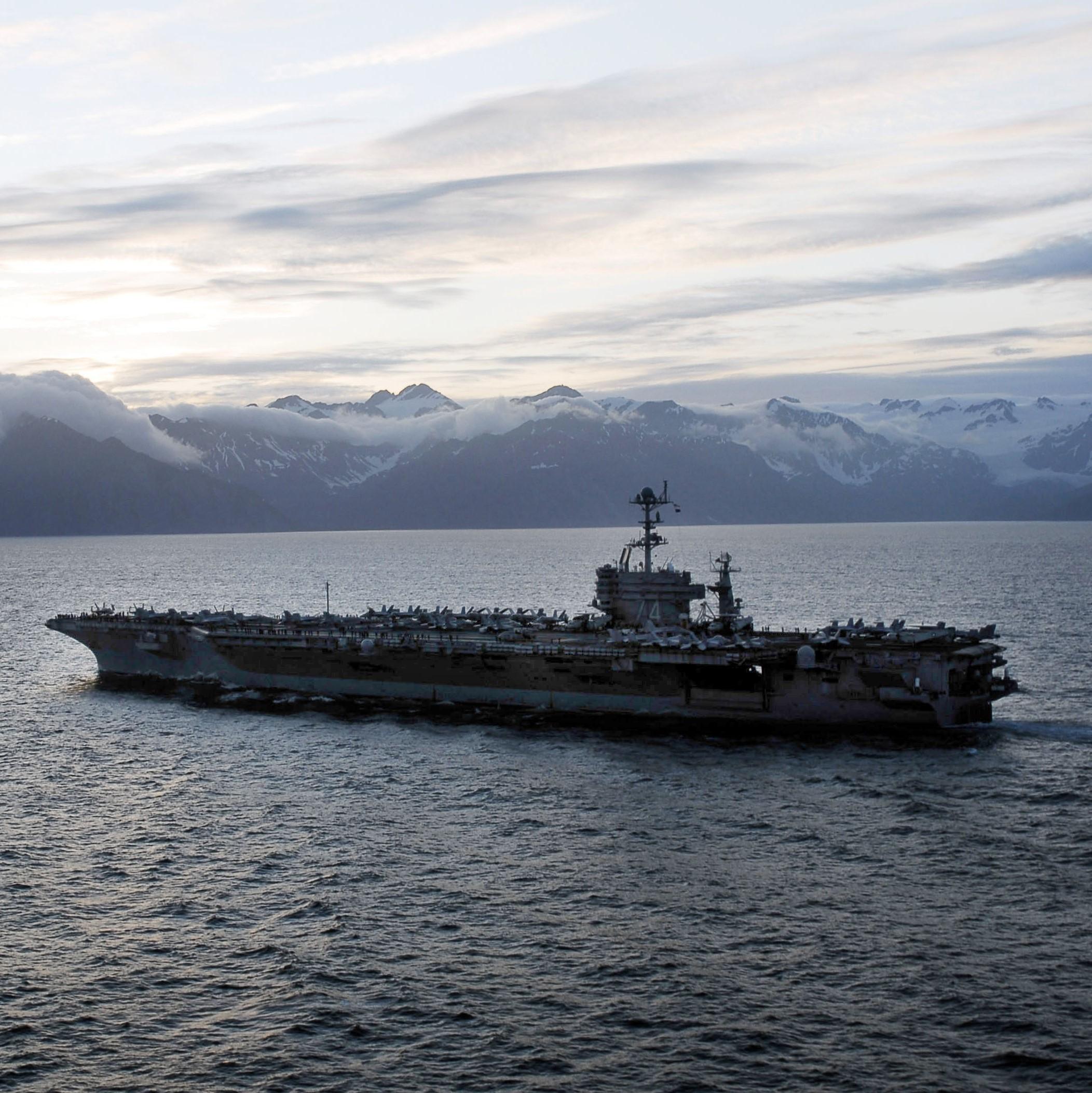Homer City Council passed a resolution on August 8, formally requesting changes to US Navy training exercises in the Gulf of Alaska. The proposed training area is 24 nautical miles from the Kenai Peninsula shoreline, just south of Prince William Sound and east of Kodiak Island. It covers over 59,000 square miles, an area slightly larger than the state of Georgia.

Emily Stolarcyk spoke at Homer City Council on August 8, in support of a resolution requesting changes to the proposed training. She’s the program manager for the Eyak Preservation Council, a non-profit group based in Cordova.
“These trainings are aimed at maintaining military readiness,” Stolarcyk said. “Everything used in the exercises is actually the same weapons that are used in war. So these are real bombs, real missiles, torpedoes, heavy deck guns and then of course, the active sonar.”
She feels that although military preparedness is important, the needs of local communities and ecosystems should also be taken into account.
“We certainly can’t understate the need for national security, but we could go about it in a more sensitive way. Sensitive to the people that live here, the communities, our industries, and then wildlife as well,” said Stolarcyk.
Homer City Councilmember David Lewis sponsored the resolution. He said he’s concerned about the impact of Navy training on wildlife.
“It matters because all that comes into Kachemak Bay basically comes from the Gulf,” Lewis said.
The proposed training would begin in May 2017. But the resolution requests the Navy wait until mid-September to avoid impacts on migrating marine species.
Bob Shavelson, Executive Director of Cook Inletkeeper, said the environmental impacts of naval training could be lessened by scheduling it later in the fall.
“These are migration corridors for our salmon and our halibut and our whales. And we could reduce those impacts considerably if we change it to later in the year and push it further from the coast,” Shavelson said.
But Navy representative Alex Stone said the longer days and calmer waters in the summertime allow them to do more training exercises.
“We get more value for our investment if we can plan the exercise when it has a greater probability of better weather, better conditions for flying and for training,” said Stone.
The resolution also requests the Navy avoid using live ordnance and sonar in Marine Protected Areas. One concern is that these activities produce loud underwater sounds, which can physically harm marine mammals and alter their behavior.
Professor John Hildebrand of the Scripps Institution of Oceanography said that beaked whales appear to be particularly sensitive to sonar.
“There was an exercise in the Bahamas around 2000 where the Navy was conducting an exercise in a relatively confined space along a channel. And then you could see the beaked whales strand themselves along the channel pretty much in lock step with position of the sonars,” Hildebrand said.
Although the effect of sonar on larger whales isn’t well known, many of these species are endangered. Any activities that could harm them receive an extra level of scrutiny, said Hildebrand.
“We’re worried about these animals already so we have kind of an extra layer of concern because there are already endangered,” Hildebrand said. “And now here’s another thing that could potentially impact them, even though we don’t know the details of how it might.”
Currently, the Navy visually monitors the area around vessels to look for marine mammals.
“Sonar could cause impacts to marine mammals if they’re close to the sonar source. We have a safety zone around that area. So we observe that area and if there are marine mammals in that area we’ll power down the sonar or turn it off,” said Navy Representative Alex Stone.
Close, in this case, is 1,000 yards. That’s according to the Navy’s Environmental Impact Statement.
The resolution requesting changes to Navy training was unanimously approved by members of Homer City Council. It will now be sent to Alaska Senator Murkowski and Representatives Dan Sullivan and Don Young.
The final Environmental Impact Statement for the proposed training is available at goaeis.com. The 30-day public comment period ends August 29.
Shahla Farzan is a reporter with KBBI - Homer.
Shahla first caught the radio bug as a world music host for WMHC, the oldest college radio station operated exclusively by women. Before coming to KBBI, she worked at Capital Public Radio in Sacramento and as a science writer for the California Environmental Legacy Project. She is currently completing her Ph.D in ecology at the University of California-Davis, where she studies native bees.
When she's not producing audio stories, you can find Shahla beachcombing or buried in a good book.




